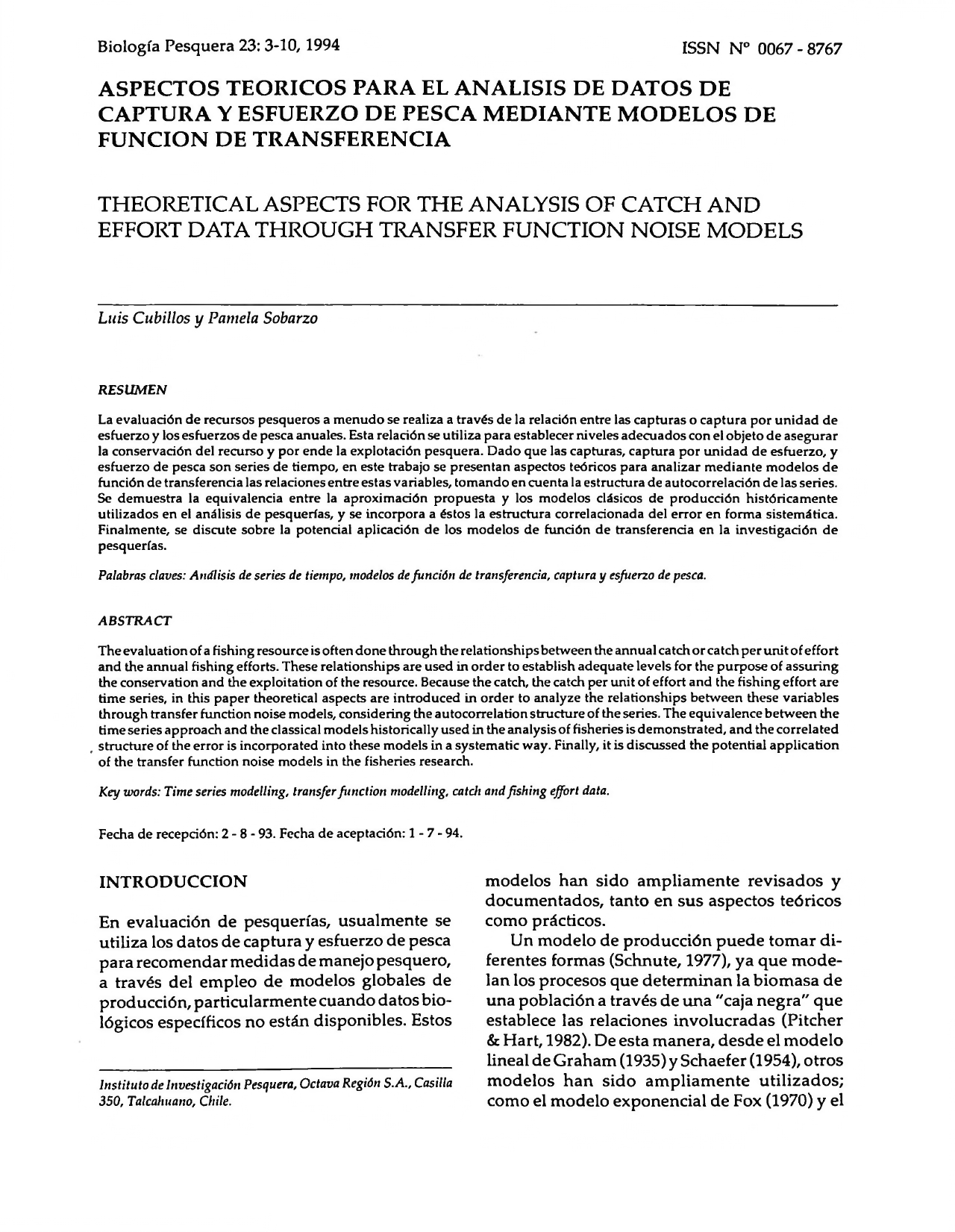Aspectos teóricos para el análisis de datos de captura y esfuerzo de pesca mediante modelos de función de transferencia.
DOI:
https://doi.org/10.21703/0067-8767.1994.23.2566Palabras clave:
Análisis de series de tiempo, modelos de función de transferencia, captura y esfuerzo de pescaResumen
La evaluación de recursos pesqueros a menudo se realiza a través de la relación entre las capturas o captura por unidad de esfuerzo y los esfuerzos de pesca anuales. Esta relación se utiliza para establecer niveles adecuados con el objeto de asegurar la conservación del recurso y por ende la explotación pesquera. Dado que las capturas, captura por unidad de esfuerzo, y esfuerzo de pesca son series de tiempo, en este trabajo se presentan aspectos teóricos para analizar mediante modelos de función de transferencia las relaciones entre estas variables, tomando en cuenta la estructura de autocorrelación de las series. Se demuestra la equivalencia entre la aproximación propuesta y los modelos clásicos de producción históricamente utilizados en el análisis de pesquerías, y se incorpora a éstos la estructura correlacionada del error en forma sistemática. Finalmente, se discute sobre la potencial aplicación de los modelos de función de transferencia en la investigación de pesquerías.




